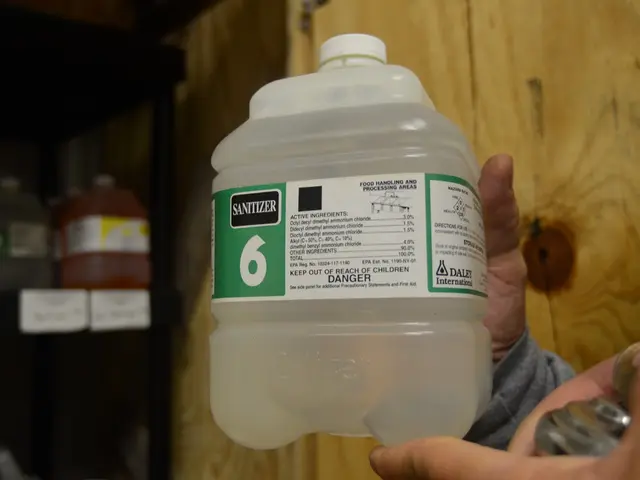Pennsylvania Potentially Faces a Significant Tick Infestation Issue
In a recent development, the Pennsylvania Department of Environmental Protection (DEP) has issued a warning about a high infection rate of the Deer Tick Virus (DTV) in ticks found in Lawrence Township Recreational Park in Clearfield County. The alarming discovery reveals a 92% infection rate, which is the highest ever documented in the state and research literature.
The DTV, a close relative of the Powassan virus, is a rare but potentially deadly tickborne virus. Transmitted through the bite of a female Ixodes scapularis tick, also known as the black-legged tick, the same species that primarily spreads Lyme disease, DTV can cause severe swelling of the spinal cord and brain, and in some cases, can be fatal.
While the search results do not specifically address an unusually high infection rate of DTV in Pennsylvania, it is known that tick-borne diseases are a significant concern in the region. The mention of tick-borne illnesses highlights the importance of public awareness and preventive measures, especially in areas where tick populations are high.
To combat the spread of tick-borne diseases, the DEP is urging the public to take anti-tick precautions. Practical steps for avoiding ticks in their native environments include wearing light-colored outer clothing, tucking shirts into pants, and pants into socks. Regularly inspecting for ticks after spending time outdoors, paying attention to areas like the groin, armpits, scalp, behind the ears, and waistband, is also recommended.
In addition to these measures, it's advisable to apply EPA-registered insect repellents when outdoors and to modify the environment by clearing leaf litter and mowing grass to reduce tick habitats. More tips for avoiding ticks can be found on the DEP's website or related resources.
Performing a tick spot check of yourself and accompanying pets after you get inside is also crucial. It's essential to remember that unlike Lyme or many other tickborne infections, it can take as little as 15 minutes for a bite to successfully transmit Powassan/DTV to a person.
While there is no specific treatment for infection with the Powassan virus, efforts are ongoing to develop a vaccine for it. In the meantime, prevention through tick avoidance and diagnostic improvements remain crucial. Public health initiatives focus on awareness and preventive measures to mitigate the spread of tick-borne diseases.
It's noteworthy that Powassan virus disease, from either lineage, is thought to be very rare in the U.S., but there is evidence that cases are becoming more common over time. About 10% of neuroinvasive cases of Powassan virus disease result in death, while half of survivors are left with lingering neurological symptoms.
The increasingly warmer climate is allowing tick populations to survive longer into the winter and to further expand their range. As such, it's essential for the public to stay vigilant and informed about tick-borne diseases, especially in areas where tick populations are high, such as Lawrence Township Recreational Park.
References: [1] Centers for Disease Control and Prevention. (2022). Powassan Virus.
- Gizmodo recently reported that a high infection rate of the Deer Tick Virus (DTV) has been found in Lawrence Township Recreational Park, Clearfield County, setting a record for the state and the science community.
- The DTV, a close relative of the Powassan virus, is a rare but potentially deadly tickborne virus that can cause severe neurological conditions and, in some cases, be fatal.
- The DEP urges the public to practice anti-tick precautions, such as wearing protective clothing, thoroughly inspecting for ticks after outdoor activities, and applying EPA-registered insect repellents.
- As the climate changes, tick populations are surviving longer into the winter and expanding their range, making it essential for the public to stay informed about tick-borne diseases, particularly in high-risk areas like Lawrence Township Recreational Park.
- The search results indicate that while there is no specific treatment for infection with the Powassan virus, efforts are being made to develop a vaccine, with public health initiatives focusing on awareness and preventive measures for tick-borne diseases.
- In the realm of health and wellness, it is crucial to prioritize fitness and exercise, mental health, and environmental science to understand and counteract the effects of climate change on tick habitats and the increase in tick-borne diseases.
- CBD, a compound found in cannabis that has shown promising effects in managing neurological disorders, may potentially play a role in the treatment of Powassan-related neurological symptoms, underscoring the need for further research in environmental science and medical-conditions.








